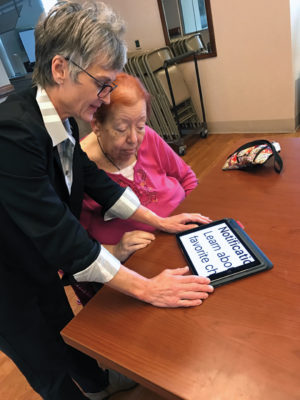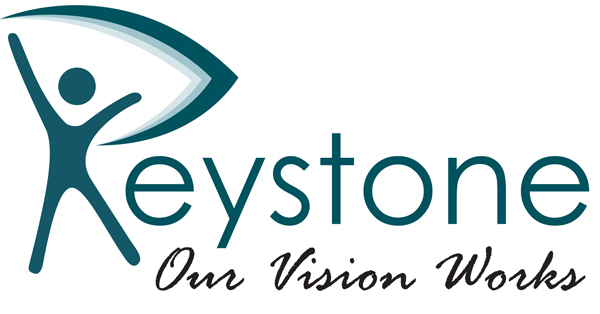Client evaluations are conducted on using the latest devices and computer software products available that are specifically designed for blind and visually impaired persons. Clients learn a variety of computer skills that are needed to seek employment, advance in the workforce, or simply make their lives easier.
SOFTWARE PROGRAMS INCLUDE:
Screen reading programs:
- Jaws, Window Eyes
- Window Bridge
- Hal
Screen magnification programs:
- ZoomText Magnifier
- ZoomText Magnifier/Reader
- ZoomText Fusion
- Zoom and Magnification features on iDevices
Reading machine software:
- OpenBook
- Kurzweil 1000
Notetakers
- Type & Speak
- Keynote
- Braille & Speak
- Braille display usage
PAC Mate, Braille Note/VoiceNote
Zoom and Magnification features on iDevices
WHAT IS Access TECHNOLOGY?
Access technology is technology used by individuals with disabilities in order to perform functions that might otherwise be difficult or impossible. For low vision or blind computer users, various types of software and peripherals are available to provide visual supplementation within computer tasks.
 Some examples of these types of computer-based tools include screen magnifier and screen reader programs, voice recognition programs and features, and scan and read programs/devices. A screen magnifier program allows for a low vision individual to zoom or magnify on-screen information; many of the available screen magnifier programs afford the user the capability of zooming the on-screen information size from 1.25x – 36x its original size! A screen reader program allows for a blind individual to access on-screen information by having such relayed audibly; this affords the user the ability to access information with their ears rather than having to use their eyes.
Some examples of these types of computer-based tools include screen magnifier and screen reader programs, voice recognition programs and features, and scan and read programs/devices. A screen magnifier program allows for a low vision individual to zoom or magnify on-screen information; many of the available screen magnifier programs afford the user the capability of zooming the on-screen information size from 1.25x – 36x its original size! A screen reader program allows for a blind individual to access on-screen information by having such relayed audibly; this affords the user the ability to access information with their ears rather than having to use their eyes.
Voice recognition technology allows for a low vision or blind individual to control and access a computer system via their voice. This technology is extremely beneficial for those users who may also experience physical difficulty with the mobility of their hands/fingers, or who simply lack keyboarding skills.
A scan and read, or optical character recognition program/device, allows for low vision or blind individuals to use their computer system in order to gain access to hard-copy, print materials. This technology affords the user the ability to access such materials without relying on sighted counterparts.
For low vision or blind individuals who are not involved with computer use, but who would also benefit by being able to further sustain their independence, there are many types of standalone, stationary, and portable access technology solutions available too.
With further relation to sustaining independence as a low vision or blind individual in today’s technology-immersed world, access technology is also available on select cellular phone models. An extremely popular and effective cell phone choice for low vision and blind individuals is the Apple iPhone. The OSX operating system offers both integrated screen reader and screen magnifier features. Setup of these accessibility features is necessary. By using some basic finger gestures applied to the device’s touchscreen, low vision and blind users are capable of accessing and navigating various phone and app-related areas. Google’s recent Android OS platforms offer the TalkBack accessibility-related screen reader app (already installed on recently-released phone models), as well as the capability to download an effective screen magnifier app. In conjunction with the access technology features/apps available on the Apple and Google cellular phone platforms, there also exist a variety of beneficial available low vision and blindness-related apps for use on related devices.
Transitioning into the use of technology may be difficult for some. For those who may be new to, or for those who just desire learning more about access technology, skilled Access Technology Program specialists are available at the Keystone Blind Association and its various affiliate agencies. Specialists are able to provide quality assessment, training, and technical support services if and when necessary. Although the challenges of everyday life may be amplified for those living with low vision or blindness, sustaining independence within various personal and professional aspects in life is possible with the implementation and use of access technologies.

